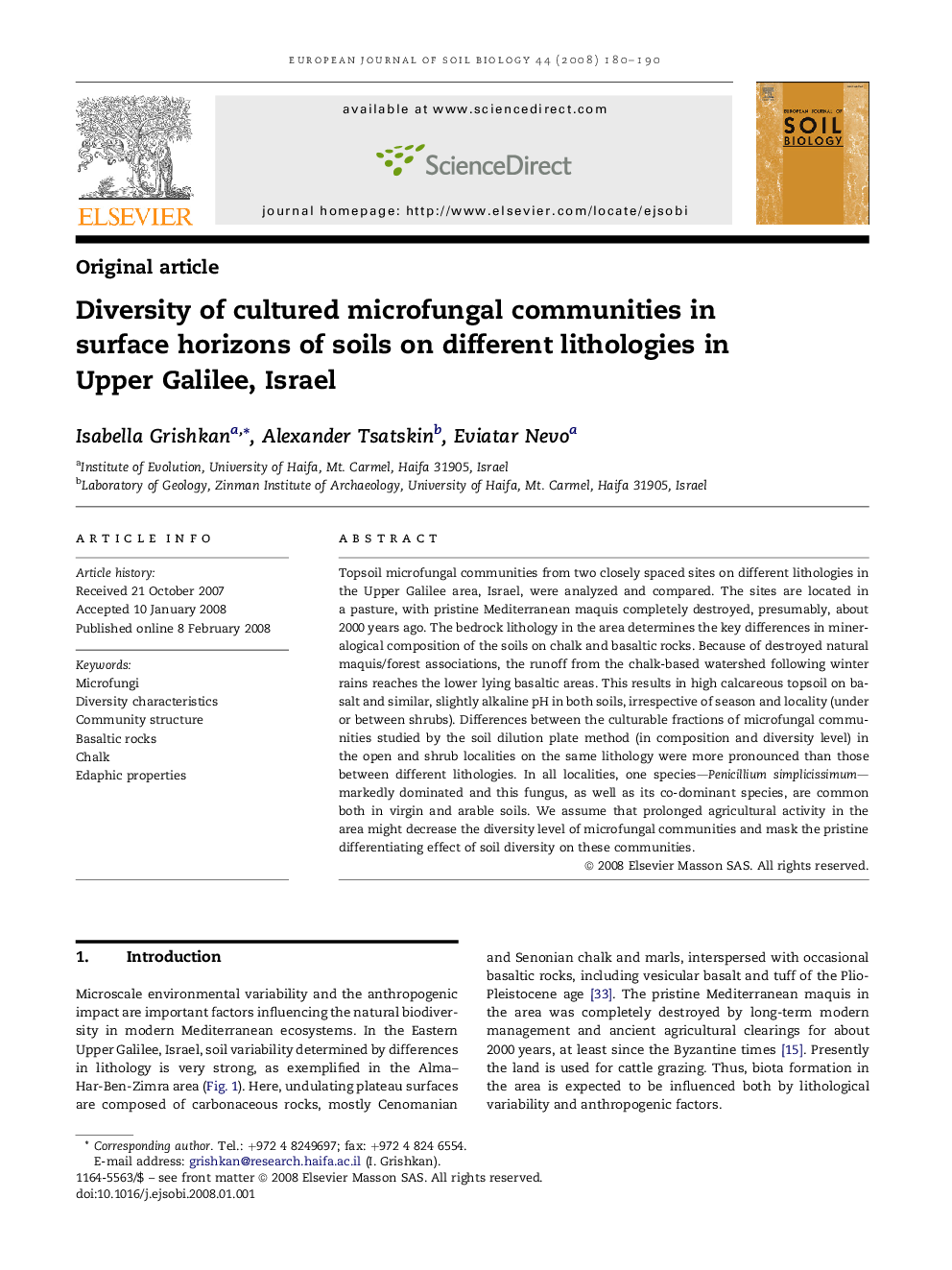| Article ID | Journal | Published Year | Pages | File Type |
|---|---|---|---|---|
| 4392418 | European Journal of Soil Biology | 2008 | 11 Pages |
Topsoil microfungal communities from two closely spaced sites on different lithologies in the Upper Galilee area, Israel, were analyzed and compared. The sites are located in a pasture, with pristine Mediterranean maquis completely destroyed, presumably, about 2000 years ago. The bedrock lithology in the area determines the key differences in mineralogical composition of the soils on chalk and basaltic rocks. Because of destroyed natural maquis/forest associations, the runoff from the chalk-based watershed following winter rains reaches the lower lying basaltic areas. This results in high calcareous topsoil on basalt and similar, slightly alkaline pH in both soils, irrespective of season and locality (under or between shrubs). Differences between the culturable fractions of microfungal communities studied by the soil dilution plate method (in composition and diversity level) in the open and shrub localities on the same lithology were more pronounced than those between different lithologies. In all localities, one species—Penicillium simplicissimum—markedly dominated and this fungus, as well as its co-dominant species, are common both in virgin and arable soils. We assume that prolonged agricultural activity in the area might decrease the diversity level of microfungal communities and mask the pristine differentiating effect of soil diversity on these communities.
